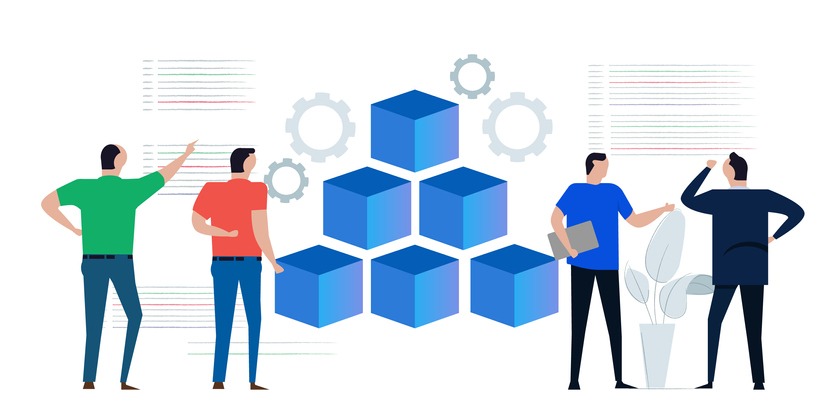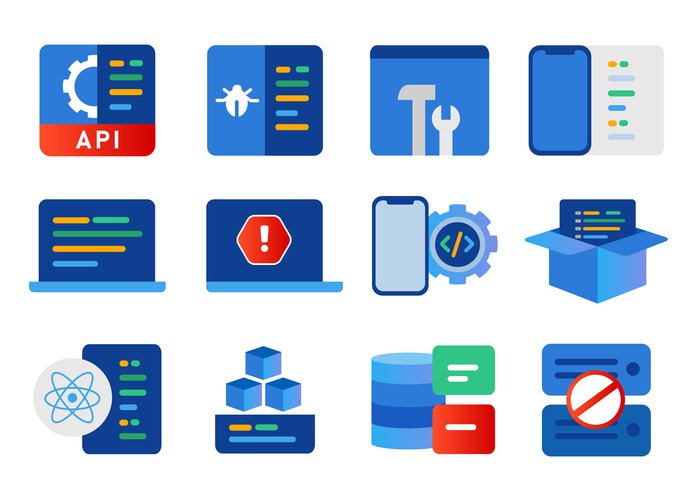
If you delve into the usual techniques of designing applications, you’ll discover that they were developed as monoliths, packaged as a collection of code, and installed as a single entity. The process of managing tens of thousands of lines of code became laborious. It impeded the implementation of architectural improvements in large corporations.
In modern times, digital unicorns are created and operated rapidly. The digital revolution permits the rapid progression of this process. Microservices architecture makes the quantum leap in this industry possible: a flexible, scalable, and durable corporate architecture.
In this article, we will discuss 5 tips for microservices and good practices that will allow you to achieve excellent outcomes with comparatively minimal effort.
What Is Microservices Architecture?
Microservice architecture is an application design approach that decomposes monolithic programs into modular, distributed, scalable, and deployable services with loose coupling. Microservices are comprised of numerous lightweight services that connect via APIs.
The services are controlled centrally, although they may be developed in different programming languages, technological stacks, and databases. Due to the program’s independence, you can update and add new functionality or features without affecting the overall application.
The Effectiveness of Microservices
Advantages of a Microservice Architecture Over Monolithic Architecture
The advantages of microservice architecture over traditional monolithic design are numerous. Here are several examples:
Autonomy
When using microservices, you can choose the programming language, data store, framework, technology stack, and optional libraries. This allows you to create multidisciplinary groups that can work on separate microservices and components without influencing one another.
Monoliths restrict framework, programming language, technological stack, and database selection. Once you have settled on these, modifying your architecture without compromising certain functionality or services is impossible.
Independent Scalable Structure
The microservices architecture can be rapidly scaled up or down. Traditional monoliths utilize the same database and programming language. Each microservice, however, can have its database and programming language.
It can be challenging to modify languages or stacks of monolithic architectures. Microservices make it simple to adjust the architecture without impacting the whole system. By partitioning your system among numerous servers and letting its services grow based on demand, you reduce the likelihood that a single server failure would bring down the entire system.
Faster Upgrades
As a result of the pervasiveness of the entire system, it may take longer for updates to take effect when working in monoliths. Every change requires the compilation and execution of the whole application.
Modifying a particular microservice does not affect the others in a microservice architecture. That translates to faster application upgrades and enhancements.
Rapid and Continuous Deployment
Due to the independence of each microservice, it is possible to develop and deploy applications rapidly. In addition, you can have independent teams working on each microservice, allowing them to utilize various technology stacks and programming languages.
Deploying a monolithic architecture takes longer. Even so, you must guarantee you employ or train engineers with the expertise of your tech stack before they begin working on it. This can result in decreased productivity.
Inherently Secure
Monolithic designs are characterized by a single, large, integrated system. Any problem can result in the application’s interruption. Due to the architecture’s complexity, you must extensively test any code modifications before deploying them to production.
In contrast, microservices are composed of independent components. A single service outage does not automatically signify the impending failure of all others. If, for example, a publishing microservice goes down, the others will continue to function independently. Compared to monoliths, this means a narrower blast radius.
Benefits of Microservices
Microservices allow you to:
- Faster deployment and scaling: A smaller application domain enables automation, resulting in quicker deployments and scaling.
- Minimize downtime: Limit the effect of a single unavailable service on your core business function, hence enhancing the overall business uptime.
- Ensure availability: Maintain functional separation across microservices to reduce the impact of an instance failure.
You should also discover more about microservices design patterns to fully unlock the potential of this approach in different scenarios.
Security Challenges To Consider
- Multi-cloud deployments: Since microservices are distributed across several data centers, host machines, and cloud providers, you constantly risk losing visibility and control over the components.
- Data management: In a microservice architecture, data is highly dynamic. Thus, they can interact, migrate, and change across multiple components and databases. How can data security be ensured when there is a large degree of dynamism? There’s more. Due to the numerous entry points and communication routes, you are susceptible to data leaks.
- The rapidly evolving security landscape: The modern SDLC necessitates the gradual expansion of an application’s code and data. The iterative and incremental development methodology exerts ongoing pressure on microservices. Each new feature or iteration increases the likelihood that security holes in the application may be exploited.

Best Microservices Tips
With this summary of the benefits and challenges of a microservices architecture in mind, let’s now explore some of best microservices tips. These best practices will assist you in developing a safe, scalable, manageable, and robust system of interconnected microservices.
Domain Driven Design
Each service must have a distinct and well-defined scope. Eliminate anything from your service that is irrelevant to its scope and retain only the elements required to meet its objective.
Ensure that you have a new domain driven design when building a microservice architecture. If you are already operating a microservice, simply determine if it employs a domain-driven architecture. You may not need to redo everything, but you can make it a better-isolated service with a distinct, well-defined scope with a few minor modifications.
Every domain driven design model consists of two phases: strategic and tactical. The strategic phase guarantees that the design architecture fully encompasses the needs of the organization. Conversely, a domain model can be built with many design patterns during the tactical stage.
Better Response with Single Responsibility Principle
The Single Responsibility Principle (SRP) is a tenet of microservice design that mandates that each module or class perform its designated task exceptionally well. There is a unique business logic behind each service or function designed to accomplish specific goals.
Reduced dependencies are among the essential benefits of SRP. Each service has little overhead since each function is tailored to execute specific tasks. In addition to speeding up responses, this technique eliminates the delay while waiting for support services to finish running.
Orchestrate Microservices
The orchestration of your microservices is a crucial success factor for your processes and tools. Technically, you could run containers on a virtual machine with tools like systemd and Docker or podman, but this lacks the resilience of a container orchestration platform. This diminishes the availability and reliability gains from using a microservices design. A proven container orchestration platform is essential for efficient microservice orchestration.
Go to the DevOpsSec Way
Similar to safeguarding your application from the beginning, DevSecOps is a development technique that integrates security throughout the whole application development process. Rather than waiting until the program is ready for production, the development and security teams collaborate from the application’s inception.
In addition, you should regularly monitor your pipelines in production and through CI/CD. The same holds for extensions and third-party libraries. This ensures that your application design is continuously secure, making it simpler to find and assess vulnerabilities and gaps.
Invest in Monitoring
A microservices-based architecture can facilitate the massive scaling of hundreds or thousands of small, modular services. A comprehensive system of microservices necessitates a systematic and strategic approach to monitoring, despite the vast promise for greater speed, availability, and reach. By monitoring your microservices, you’ll guarantee that they operate as intended, are accessible to your consumers, and utilize resources effectively. When these conditions are not met, you can take the appropriate action.
When it comes to monitoring, there’s no need to reinvent the wheel. Several widely adopted monitoring systems can be smoothly integrated into your infrastructure. Some solutions employ SDKs for exporting metrics, which can be added to a microservice with one or two lines of code. Others may be linked with your API gateway or service mesh as a plugin for monitoring networking issues and resource consumption.
Metrics collected by your monitoring tools can be used in stunning dashboards to grasp better the data driving your microservices. How many people were online on Tuesday at 8:00 p.m.? Since implementing that new feature, has the CPU load increased significantly? What is the response time between our product shipping API and invoicing API?
By monitoring your microservices and displaying your hard figures clearly, you can make informed decisions on how to maintain the health and availability of your microservices. As you do so, you will maintain user satisfaction.
Conclusions
Microservices offer an exciting journey! You begin with the advantages of accelerated deployment and scalability, decreased downtime, and overall enhancement of your business’s availability. Then, you incorporate your orchestration platform and best practices, and voila! You have a secure, dependable, and impregnable symphony of packets circulating between your microservices.


